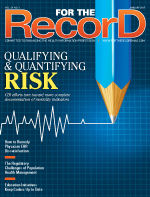January  2017
2017
By The Numbers
For The Record
Vol. 29 No. 1 P. 34
1/2
Bain & Company's multinational survey of four European countries (the United Kingdom, Germany, France, and Italy) found that more than this fraction of hospital physicians would not recommend their organizations to their family or friends as a place to get treatment.
73
According to a Merck Manuals survey, this percentage of family physicians considers themselves tech-savvy, and 66% use a mobile device to access medical information in a professional setting more than 10 times a day. Of those who use a mobile device to access medical information in a professional setting, 80% use the information to inform their diagnosis or treatment plans for patients, 66% catch up on the latest medical news, 60% use it to explain information to patients, and 28% send information directly to patients.
81
This percentage of respondents to a Merck Manuals survey agreed that the availability of medical information on mobile devices has changed the dynamic of office visits; 56% of family physicians said doctors and patients are more likely to review medical information together, 29% said appointments are more efficient as a result of mobile medical information, and 34% said patients arrive more informed and prepared—yet 33% said patients arrive misinformed.
$2.14 Million
The Office for Civil Rights recently reached a settlement for this amount with St. Joseph Health, according to FierceHealthcare. Data, including patient names, health statuses, diagnoses, and demographic information for 31,800 individuals, were compromised when the health care system's files were publicly accessible on the internet from February 1, 2011 until February 13, 2012.
19
According to a Health and Human Services Office of Inspector General audit, the Washington State Health Care Authority made incorrect Medicaid EHR incentive payments to this number of hospitals. The faulty payments included both overpayments and underpayments, resulting in a net overpayment of $9.2 million.
97.25
According to a PhishMe report, a review of the 689 malware analyses it conducted in the third quarter of 2016 found that this percentage of phishing e-mails contained ransomware, up from 92% in the first quarter of 2016. The remaining 2.75% of phishing emails utilized "quiet malware," which can enter and remain undetected in an organization's system for an extended period of time.
52
Kaiser Permanente had more than 110 million interactions between its physicians and members in 2015, with this percentage done via smartphone, videoconferencing, kiosks, and other technology tools, according to CEO Bernard J. Tyson.



